There are various methods for how berries are cultivated. Some grow on vines, others grow on bushes, while some grow on trees.
If you are wondering which berries grow on trees, or you are currently planning to have your own berry trees in your garden, knowing which berries are edible and which are only for ornamental purposes will greatly help you design and pick which kind of berry trees you should have.
There are a wide variety of berry trees that provide food and shelter for animals, including birds. Some berries will also make for a healthy, palatable snack for you and your family. However, there are berries that can be toxic to humans and animals if ingested.
For this post, we’ll focus on berries that grow on trees, and if they are edible or not.
1. Acai Berries
Acai berries grow on acai palm trees that are commonly found in South and Central America’s rainforests. These fruits are 1-inch round, have a large pit, yellow flesh, and dark purple skin.
Because they have pits, acai berries are technically not a berry, but a drupe. Nevertheless, they are typically classified as berries.
Before they are eaten, fresh acai berries are soaked to soften their skin before they are mashed. Their taste is earthy, and somewhat similar to the taste between unsweetened chocolate and blackberries.
Because acai berries have a short shelf life and are not available outside the areas where they are cultivated, these berries are usually sold as frozen puree, or in the form of dried powder or juice.
2. Canada Buffaloberry
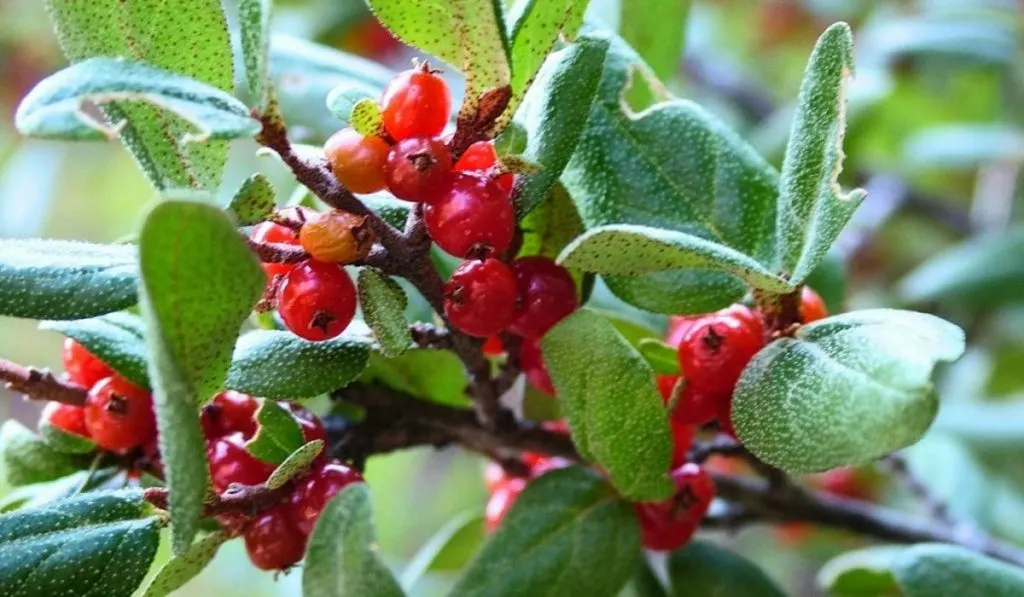
Despite their name, Canada buffaloberry is also cultivated in the northern and western United States, as well as in Alaska.
For centuries, North Americans have gathered these berries to make sxusem, or Indian ice cream. Buffaloberries have a bitter and sweet flavor.
Therefore, to lessen their bitterness, another sweet berry or fruit is added. They are then whipped in a bowl to create a frothy mixture. The froth is the result of a chemical present in berries, called saponin.
3. Cherries
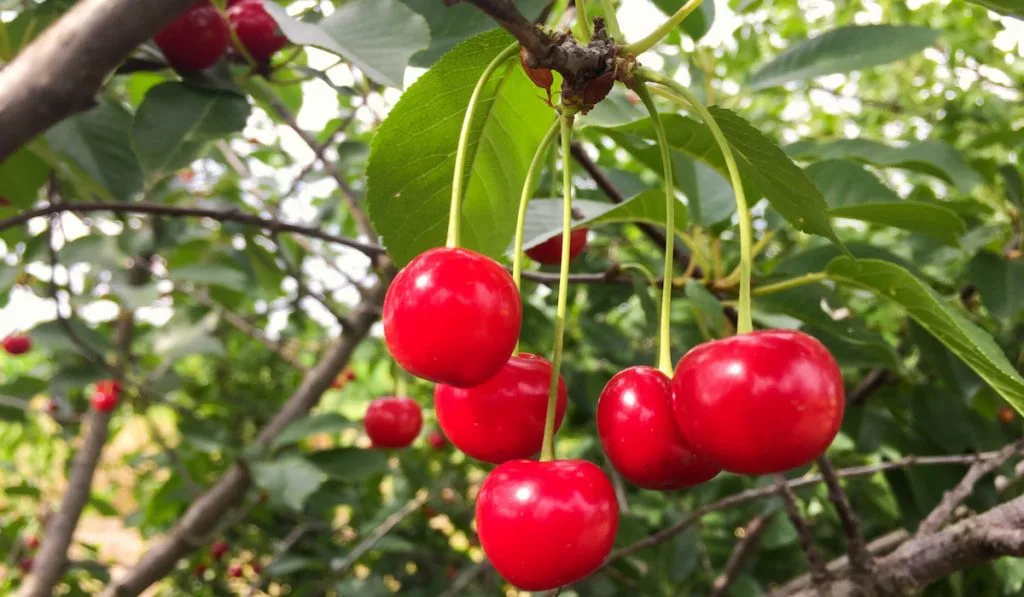
There are different varieties of cherry trees that produce edible fruits. Cherries vary in color – from yellow to different shades of red.
They also vary in taste – some are sweet, while others are sour.
4. Cornelian Cherry
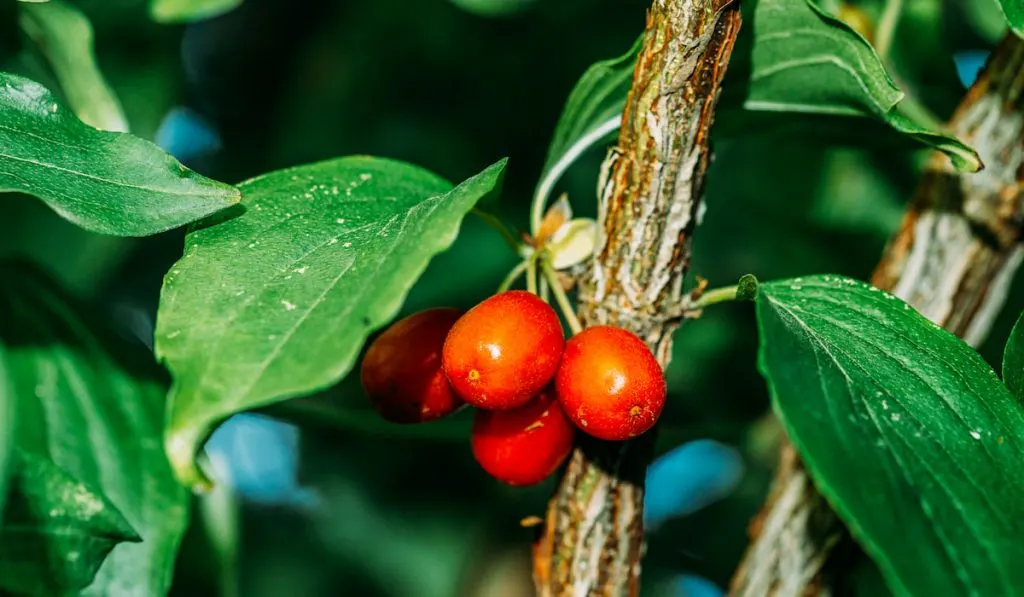
Cornelian cherry is an edible berry that comes from the Cornelian cherry dogwood. They are usually made into sauces, desserts, and syrups in Europe. However, Cornelian cherries are not popular in the United States.
When ripe, this coffee-shaped, red tart berry tastes similar to cranberries and other sour berries.
A hardy and disease-resistant flowering tree, Cornelian cherries typically ripen in the month of August. Not only are they enjoyed by humans, but birds love these berries as well.
5. Elderberry Trees
Growing in moist, slightly acidic soil in mild to subtropical regions of the Northern Hemisphere, elderberry trees are loved by birds because of their tasty fruit that is purple, bluish-black, or black in color.
However, for humans, elderberries need to be cooked first to inactivate the alkaloid compounds because these compounds can cause nausea.
These berries have a sharp, tangy flavor. For this reason, they are usually cooked and sweetened to create jams, chutneys, juices, and even wine.
Elderberries are an excellent source of vitamin C and vitamin B6 which are both important to boost the body’s immune system.
6. Farkleberry
The farkleberry tree is a small crooked tree that thrives in acidic and sandy soil. These trees are mostly found south of the Missouri River.
Farkleberries are edible, yet small and seedy. They are usually ripen in fall, but they are still edible in winter even when they tend to be wrinkly and dry.
7. Goji Berries
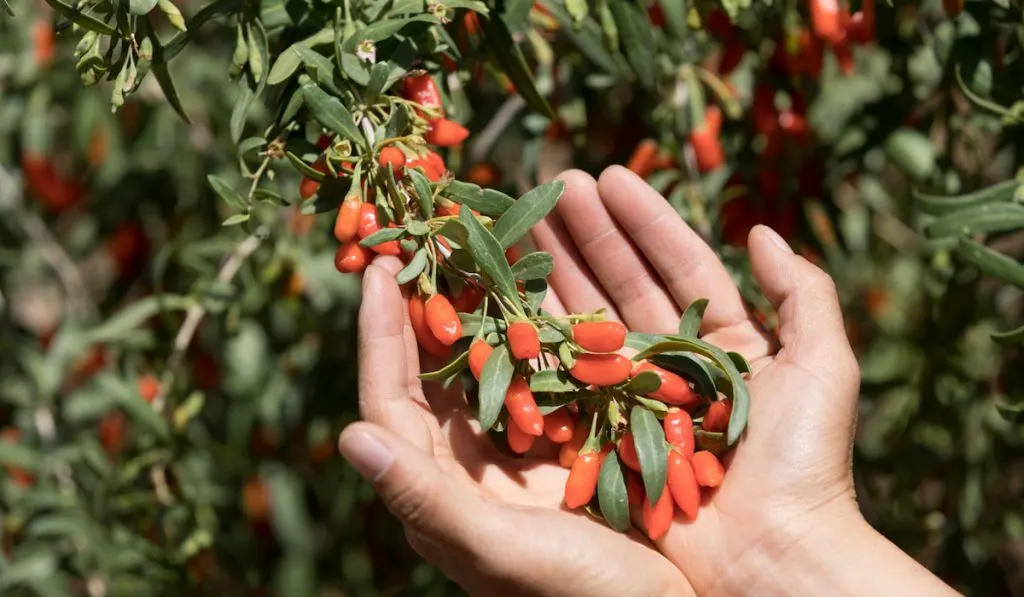
Also known as wolfberries, goji berries are native to Asia and Southeastern Europe. It is a bright orange-red fruit that is eaten raw, dried, or cooked. They are also used to make juice, wines, herbal teas, and medicines.
Recently, goji berries have been touted as “superfoods,” and are used to try to treat common health problems, including fever, diabetes, and high blood pressure. However, there is only a little research to support these health claims.
8. Hackberry
A wide variety of hackberry trees are commonly found in the Northern Hemisphere. Their fruit is edible and very nutritious. Hackberries are packed with vitamins, protein, fat, and carbohydrates.
While their flavor varies depending on the tree, hackberries are generally sweet, crunchy, and delicious. However, they can be so crunchy sometimes that it will be very hard to chew. Therefore, they are smashed using blocks of wood, and then stored at room temperature.
9. Hawthorn Berries
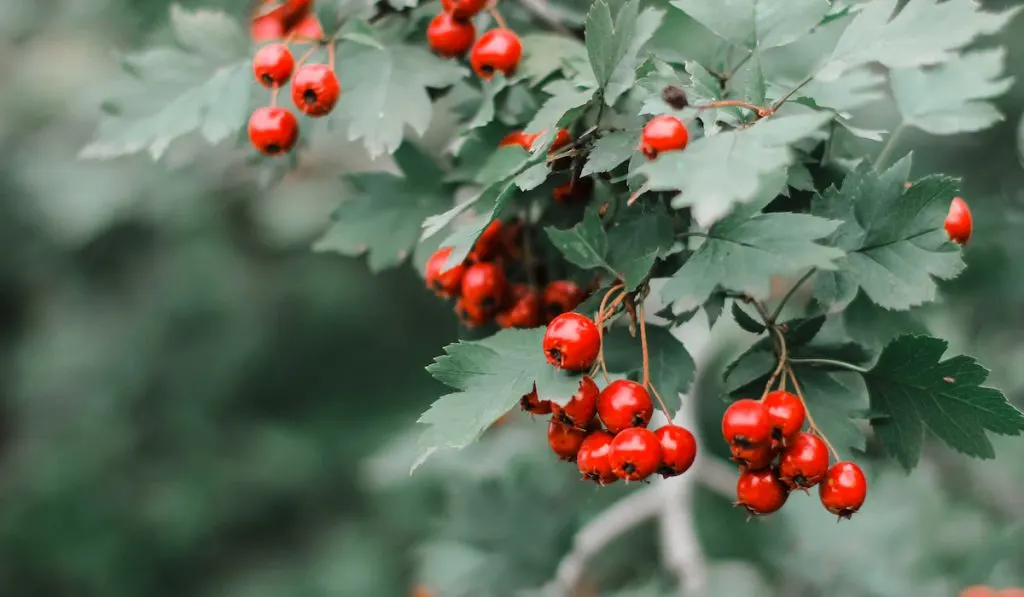
Hawthorns grow in areas with a temperate climate. Also known as hawberry, thornapple, or mayhaw, hawthorn trees are easily identified because of their short trunks, thorny branches, and leaves that grow spirally on their shoots.
This tree produces red berry-like fruit that is edible. However, like apples, their seeds can be toxic to humans, and therefore should not be eaten.
10. Holly Berry
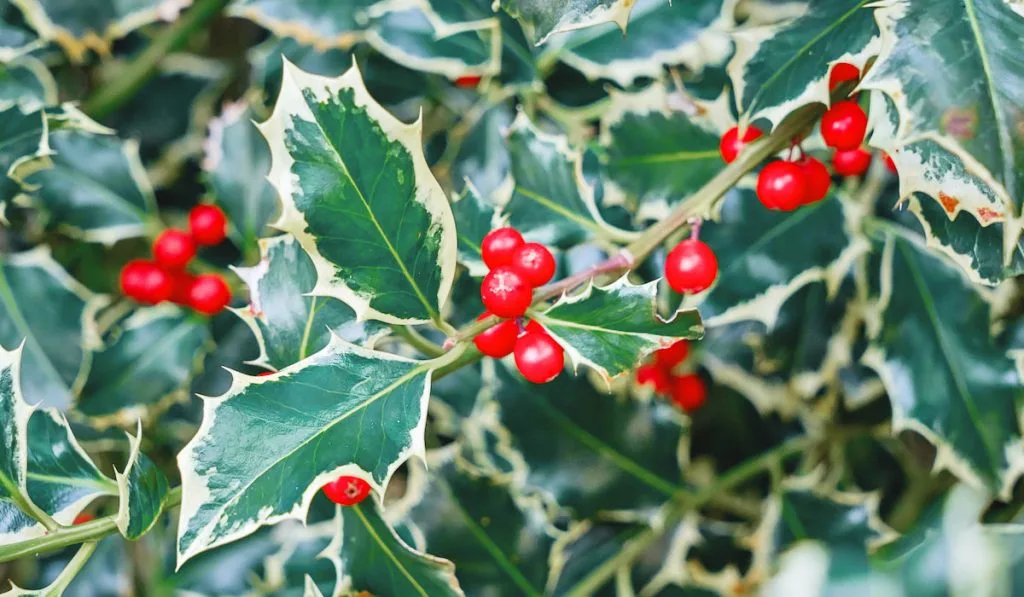
The holly tree is a large tree that produces Christmas-bright berries. However, not all holly trees will have berries since these trees are dioecious, which means that male and female plants are needed to create berries; and, only female trees can have berries. Holly trees will have dark green, often spiny, glossy leaves year-round, and female trees will yield berries in the winter.
However, their berries are not safe for human consumption, although birds are sure to love them. Because of this, humans can use holly branches with berries to make beautiful decorations, such as wreaths and garlands – the classic symbols of the Christmas season.
11. Juniper Berries
Juniper berries are actually not berries, but are modified cones. Juniper plants are very tough and can be found in many parts of the world. Juniper berries can grow in small- to medium-sized shrubs, as well as in medium-sized trees.
These berries are used for culinary and medical purposes. They are not eaten like other juicy berries, though. Instead, only a minimal amount of matured juniper berries is added to marinades and dishes as a spice. They are also used to add flavor to gin.
12. Mulberries
Mulberries are native to Asia, but some are native to the east coast of America as well. Today, mulberries are found in Europe and North America, too.
Mulberries come from medium-sized trees that are easily grown through cutting or by planting them from seeds. It is worth noting that mulberries can stain concrete and cement, and therefore should not be planted near sidewalks.
Mulberries are usually dark red to black in color, but some also come in white. Their appearance is similar to raspberries, but elongated.
These berries are juicy with intense sweet flavor. They can be eaten fresh, or they can also be added in pies or even in teas.
13. Red Berry Mistletoe
Mistletoe is a parasitic plant that grows on trees and shrubs. Most often, they are found in the branches of tall trees where they are commonly mistaken for a bird’s nest. Mistletoe produces poisonous red berries. It has small, smooth green leaves, along with clusters of up to 6 berries.
14. Rowan
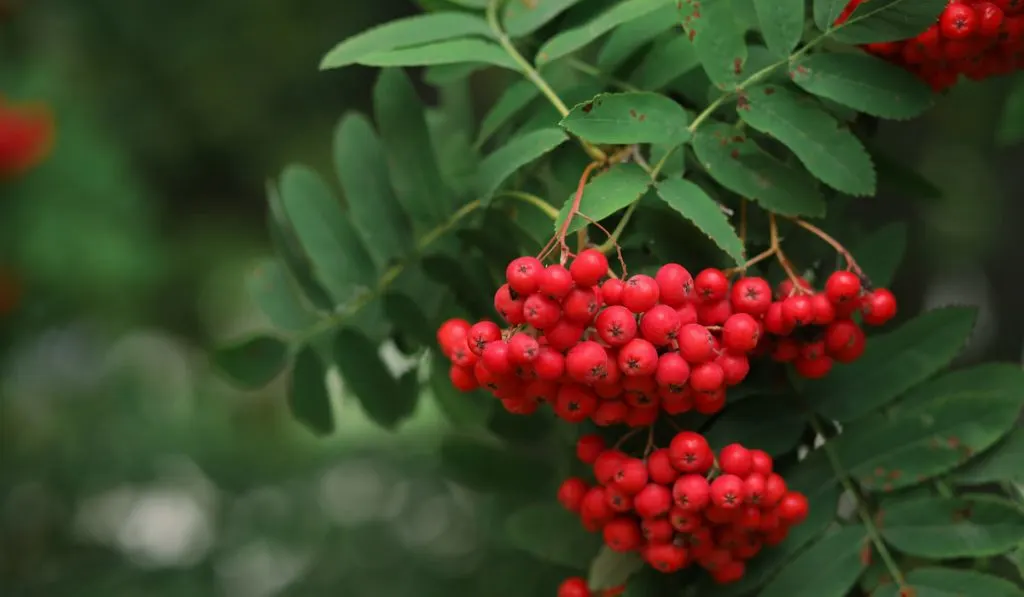
Also called mountain ash, rowans are medium-sized trees that produce bright red berries, although Asian species of this tree can also produce white-colored ones.
European varieties of rowan are quite bitter in taste. Usually, they are made into jellies, but they can also be dried and used as a substitute for coffee.
15. Soapberry
Soapberries, as their name suggests, are used as a soap substitute by the native people. When the soapberry is crushed and mixed with water, it produces a soap-like material which acts as a natural detergent and is used to clean things.
Like the Canada buffaloberry, soapberries contain saponin. However, because the saponin that is present in soapberries is enough to irritate a human’s stomach, these berries are not safe for human consumption.
16. Strawberry Tree Berries
Strawberry trees are native to the Mediterranean, Europe, and Ireland. This small tree produces an edible fruit that is loved by humans and birds.
Strawberry tree berries are commonly used to make liqueur, jams, and beverages. In Europe, they are also used as a food for bees in honey production.
17. Yew

Yew trees are found in North America. This tree produces soft, red berries that have a sweet taste.
However, eating them is dangerous. This is because every part of the tree, including the seeds of the berries, contains taxine – a highly toxic alkaloid. Therefore, only the flesh of the yew berry is edible. Other parts are considered deadly poisonous.
Whether you want to grow berry trees for edible, ornamental, or environmental purposes, it is very important to know if the berry is edible or not. You should never eat a berry if you are unsure about what species of berry you have.
Also, if you are sure that the berry is toxic, make sure that pets and children have no access to that berry. Or better yet, don’t put that berry in your garden.
Resources:
- https://garden.lovetoknow.com/wiki/Slideshow:Which_Berries_Grow_on_Trees
- https://www.thetreecenter.com/berries-grow-trees
- https://leafyplace.com/trees-bushes-with-red-berries
- https://www.healthline.com/nutrition/wild-berries#10.-Buffaloberries
- https://www.healthline.com/nutrition/benefits-of-acaiberries
- https://www.foragingtexas.com/2006/04/farkleberry
- https://www.webmd.com/diet/goji-berries-health-benefits-and-side-effects
- http://www.twisted-tree.net/hackberry
- https://www.gardeningknowhow.com/ornamental/shrubs/juniper/are-all-juniper-berries-edible
